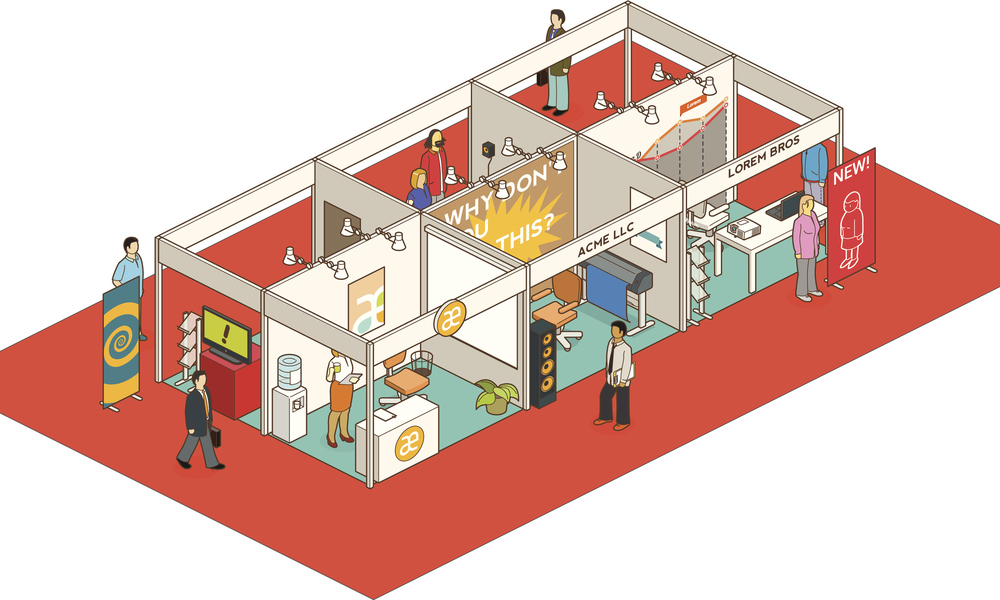
Five Meeting Features to Reevaluate Post-Pandemic
Time away from the expo hall might offer an opportunity to try things in a new way. Read on for ways to tweak your offerings in response to COVID-19—or just because it’s time for a rethink.
In-person events are slowly coming back—but the time away from them offers an opportunity to rethink some of their common features.
And it’s not just health and safety protocols that are getting a fresh look in the wake of COVID-19. The pandemic’s forced pause has given meeting planners a chance to see their events in a new light.
With that in mind, here are a few areas you may want to consider refreshing before your next in-person event:
1. Swag Bags
During the pandemic, branded items, or swag, took a bit of a back seat to other priorities, giving event planners an opportunity to rethink the whole swag concept while in-person events were on break.
One notable way this played out was the rise of tangible items mailed to virtual attendees’ doors, and there’s evidence that mailed swag may find useful life beyond the pandemic. How so? Well, The Wall Street Journal reports that the somewhat wasteful nature of swag has given way to a concept called “gifting as a service,” essentially giving swag recipients the option to get items that they are more likely to want mailed to their doors.
2. Exhibit Halls
Even as Americans continue to get vaccinated against COVID-19, it’s still important to come up with ways to manage exhibit halls so that they are more spread out and don’t cause crowding. The blog for Kalahari Resorts & Conventions has a few ideas for building exhibits with physical distancing in mind, including creating wider aisles, organizing booths in quads to allow extra aisle space, using dividers, and carving out additional space between exhibits.
“Whatever modifications you make, be sure to communicate these with your exhibitors and attendees so they know your exhibit hall is designed with everyone’s health in mind,” the blog explains.
As time goes on, there may be room to loosen these standards, but for now this could be an effective way to make room for social distancing while keeping the energy of the in-person exhibit hall.
3. Codes of Conduct
Codes of conduct were seeing big changes even before the pandemic, but in light of recent discussions about diversity, they have become increasingly important as a tool to ensure that members are following standards of professionalism that make strides toward inclusivity.
One other type of document that could come in handy in an in-person environment is the meeting agreement, which gained attention during the pandemic as a way to help set a standard of comfort and engagement during virtual events. Given the discussions around giving attendees room for social distancing, it could prove an important addition to your in-person event repertoire, too.
4. Planning Documents
If associations hope to get people back at events again, they need to emphasize that the organization is taking safety seriously—a job that is likely to fall on an association’s planning team.
With that in mind, creating a COVID-19 protocol document to keep attendees safe could be the way to go. Julie Ann Schmidt, CMM, CMP, the CEO of Lithium Logistics Group and a certified COVID compliance officer, told Associations Now about the importance of building a document like this back in February.
“Your protocol document is your standalone document that states everything your association is doing to keep everyone safe,” Schmidt explained. “It encompasses several elements—from cleaning, to screening and testing, to transportation, and everything in between.”
5. Food & Beverage
During the pandemic, concerns about going to restaurants were common, with the buffet facing particular challenges. While the business is slowly coming back, most notably to Las Vegas, consumers may be more wary of buffet-style dining than they used to be.
Given that many in-person events traditionally have offered buffet options for attendees in the expo hall, a rethink is likely. Some observers, such as Sean Willcoxon of Mazzone Hospitality, see the buffet sticking around—but not in the form most people expect.
“To minimize shared tools, buffets are no longer self-serve. Instead, attendants serve each guest,” he wrote for TSNN last fall. “While this may slow line speed and efficiency, health and safety must be the priorities.”
As the Cvent blog notes, others see a move toward single-serving grab-and-go dining options, as well as meals pre-placed at seats during the event.
(anilyanik/DigitalVision Vectors)






Comments